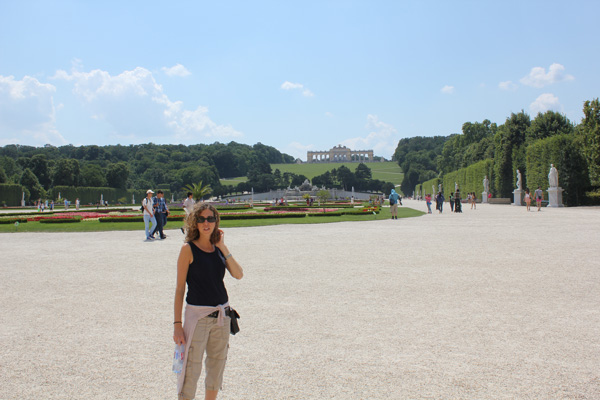Chris & Allyson vs. Europe (2013)
Tales From Vienna, Day Three: Mauthausen.
Dear Someone,
Please understand if words fail me today. We visited Mauthausen today, and it's a disorienting place. It has the power to evoke joy, sadness, grief, hope, shame, resolve, and even laughter. It also weighs you down with the burden of what you should be feeling. Or at least, what you think you should be feeling.
Like I said, It's disorienting. We even experienced this while planning the trip. When Allyson and I were talking over things we really wanted to see, I brought up concentration camps as though it was a confession. She confided right back. It was an experience we wanted, but no one wanted to say they wanted it. I am glad we got over ourselves, because it was an experience worth having.
Mauthausen isn't one of the most notorious camps, but it was a big one -- and the last one "liberated" by the Allies, if that's even the right word. The Nazis built it next to a quarry, to maximize the output from all the forced labor. I guess it also became a "distribution center" that supplied workers to smaller camps, wherever the Nazis needed slaves. And it was a warehouse for weaker prisoners who were about to die.
We took a train west out of Vienna in the morning, heading all the way to Linz before switching to a local that backtracked to Mauthausen station. It's a quiet town in the middle of rolling countryside, so we thought we might walk uphill to the camp. As luck had it, the only on-duty taxi for miles drove past us, and thank god. It was another 10 minutes driving uphill.

Mauthausen, now maintained as a memorial to those who suffered and died there.
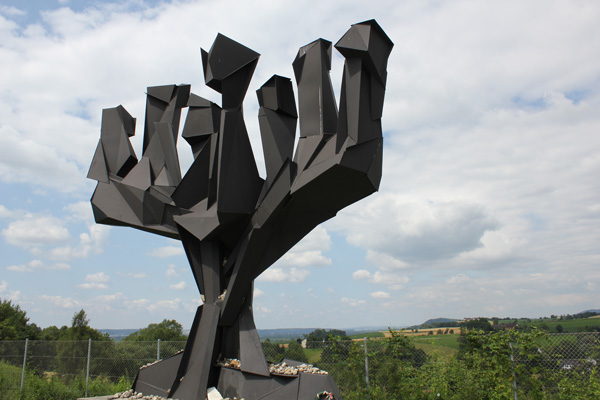
One of the many monuments installed to remember the victims of Mauthausen.
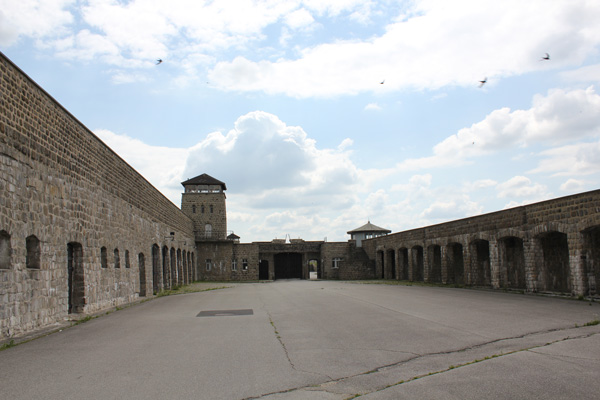
A prison courtyard.
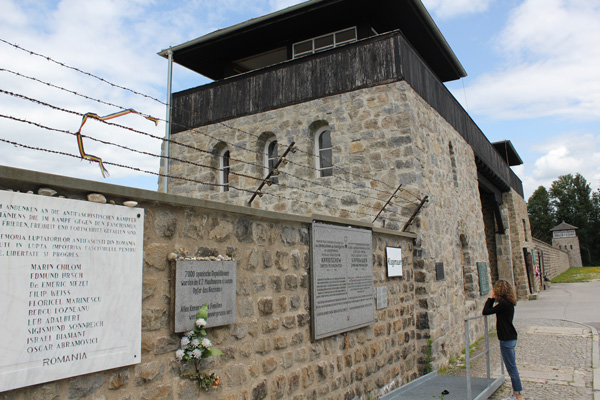
The gates of Mauthausen, a grim sight for many.
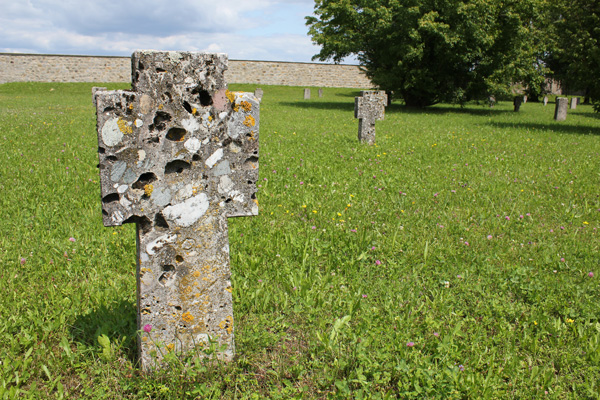
A quarantine area has been transformed into a cemetery.
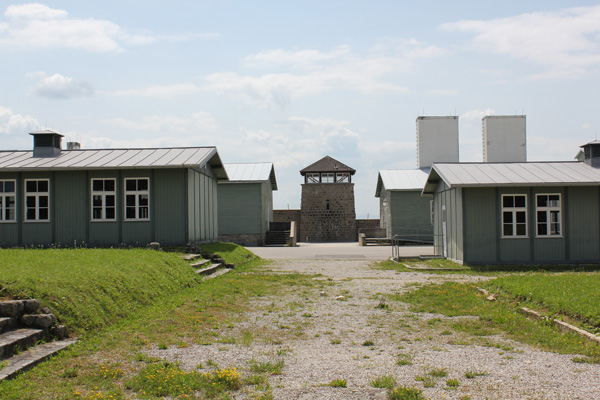
Prison barracks and a guard tower.

The rusted remains of barbed wire.
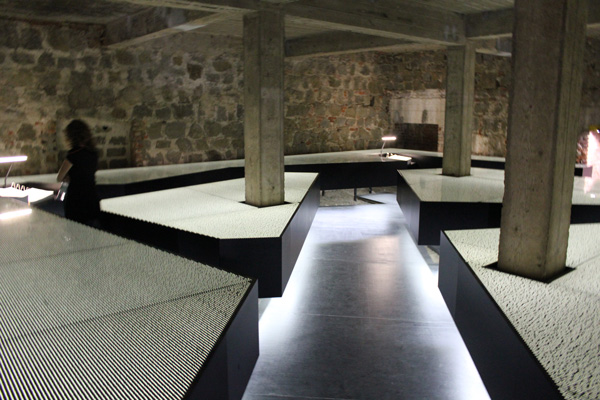
The names of those held at Mauthausen, incorporated into a symbolic display.
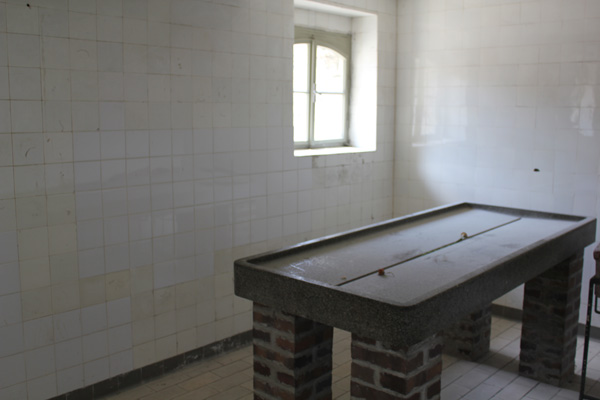
A grim operating table.
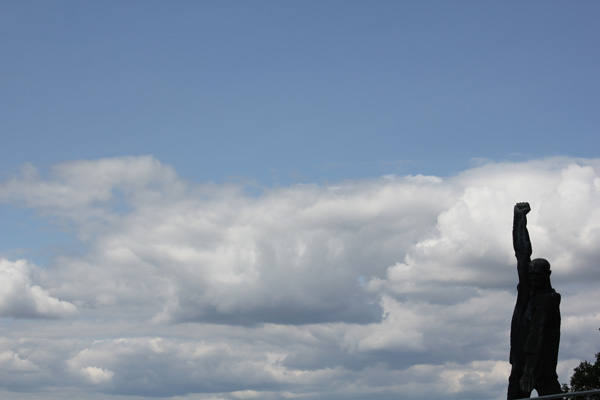
Another defiant monument on the grounds of Mauthausen.
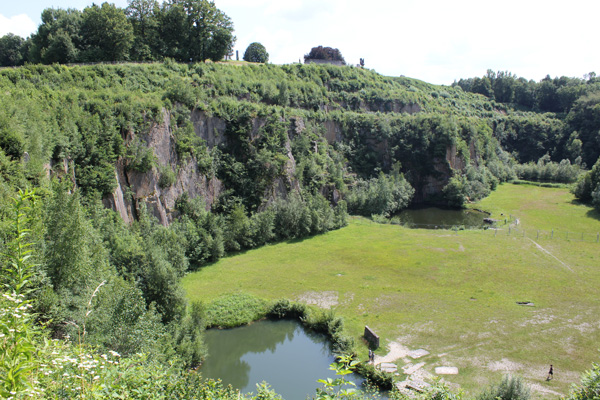
The quarry where Mauthausen inmates were forced to work.
It feels profoundly strange to say the setting is beautiful. There are farms in every direction, and we visited on a day of blue skies and fluffy clouds. There's no noise to speak of, whether that's out of respect of the slower pace of the country. The prison is a bland gray, and for all the dread people must have felt going through the gates, there's nothing particularly imposing about the look of it. It seems like a drab and functional structure, meant to do little more than contain people. It's a far cry from the castles you can find all over the European countryside.
It's not an uplifting visit, but we did start with the inspiring features. Have you been to Gettysburg? Have you seen the battlefield memorials? They have that at Mauthausen, but with nationalities instead of regiments. There is space outside the walls where different peoples have honored those who died. The memorials are a mix of resolve and sadness -- a skeleton with its arms raised to the heavens, a jagged 12-foot menorah, a wall of portraits -- but they are all profound.
Inside the walls, Mauthausen is a lot more numbing. They do have a visitor center, and we did sit through a 45-minute movie made about the camp in 1986. It was horrendously informative, explaining the mechanics of death, showing interviews with survivors and sharing images from the war. Comfort was never a consideration, so there were thousands of people smashed into a space for hundreds. We walked through courtyards that had been strewn with emaciated prisoners. You can see photos and videos of the Nazi high command touring the facilities like a U.S. presidential candidate glad-handing his way through a steel mill. Russians and Jews had the shortest life expectancy, as they were worked the hardest, treated the poorest and were often outright murdered. But once you got to Mauthausen, regardless of your origins you were on an accelerated path to death. The Nazi guards encouraged ethnic divisions among the prisoners and tried to cultivate some collaborators from their ranks.
We skipped the snack bar -- it seems wrong to have a slice of pizza before touring a place where thousands starved -- and picked up the audio tour for our walk around the grounds. It was informative and detailed, to the point where the stories wash over you and mingle together into a nondescript foam of awfulness. The buildings were mostly set pieces for imagining the stories in the tour. The gates of the camp were original, as were a few of the barracks, the crematorium and the gas chamber. The rest of the structures are reconstructions. Near the crematorium and the gas chamber, they installed an indoor monument to those killed by the camp. It's a light box made of black metal, about two feet high. It fills an entire room, minus the path left to walk through. The top of the box is the illuminated names of the dead. In very small script. There must be more than 100,000 names.
The last stop was the quarry itself, which gave the camp a reason for being and broke so many of the prisoners. Now it's grassy and quiet, with all signs of industry removed. The stairs to the bottom are rough-cut stone, and they had to be worse during the war. The prisoners called them the Stairs of Death. People whose bodies gave out carrying rocks fell backwards down the steps, or sometimes SS guards just pushed prisoners off the side and down the cliff. There were other visitors at the camp that day, but we were mostly alone at the bottom of the quarry.
I can't say that I've processed it. I'm not sure how you can. There's the intellectual knowledge of what happened, but it's more visceral to see the mechanism that made it happen. I can't imagine the endurance of anyone who lived through it, or what it did to them. I think it meant something to Allyson, too. She jokes about being a bad Jew; I know there aren't many times that she feels a connection to that history. I do think she felt some connection at Mauthausen. It wasn't something that we talked about in hushed tones -- in the great Jewish tradition, I know a few jokes were made during the tour, though I can't honestly remember about what. You do have to laugh in the face of the death, after all.
The rest of the day will seem, no doubt, wildly uninteresting. We split a cab with some Finnish students back to St. Valentin, where the 4:45 train whisked us back to Vienna. We continued our barnstorming tour of cafes mentioned in our guidebook by having dinner at Café Mozart. It's conveniently close to the hotel, and I finally got my wiener schnitzel. Plus something called Emperor's Pancakes, which as near as I can tell is a cross between regular pancakes and bread pudding. Franz Joseph liked them, which is probably the most exciting thing about the man. We sat on the steps of the Albertina museum for a little, then took another pass through the pedestrian mall. It was a good day to end with a drink, so we chatted with bartender Wolfgang at the hotel. He recommended a few stops for our final day in Vienna, and I think we might take his advice ... more on that next time.
Do hug someone a few seconds extra today.
Yours,
Chris
